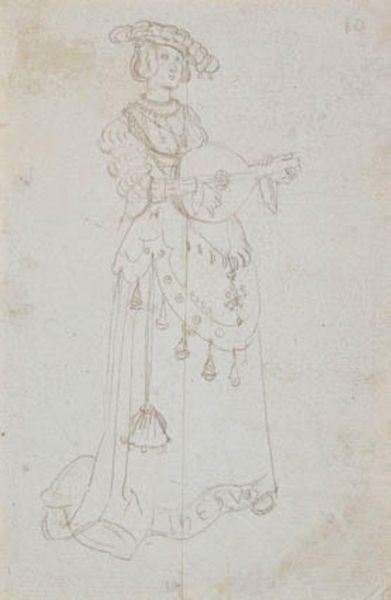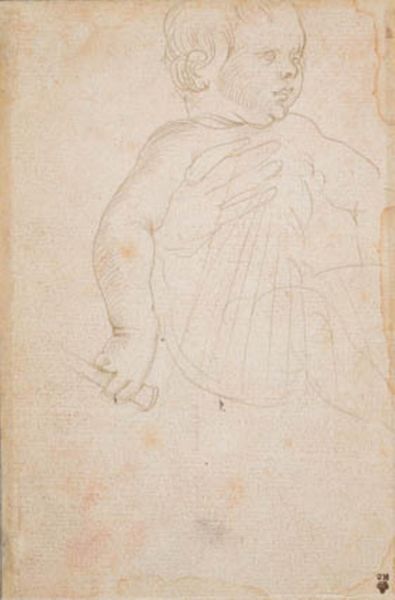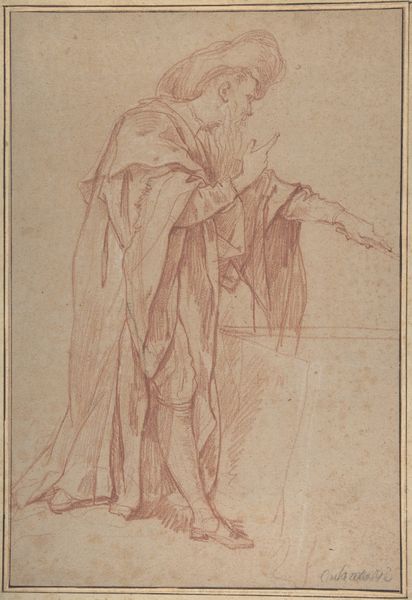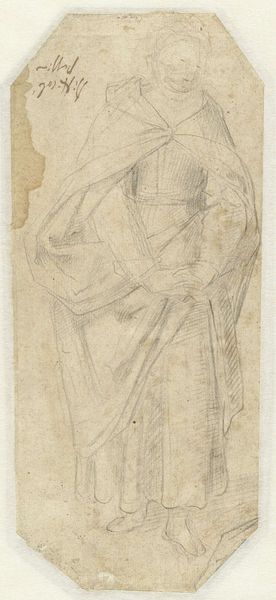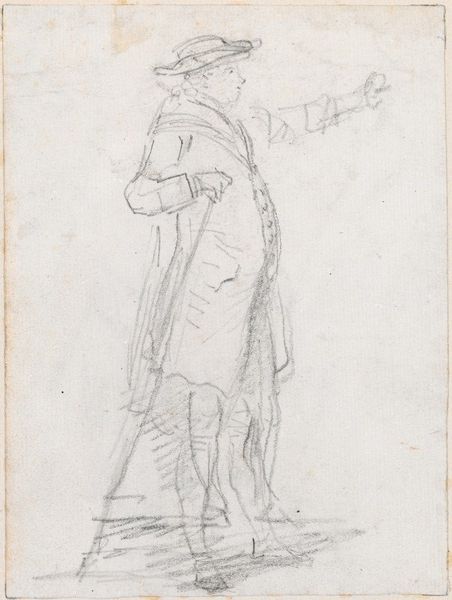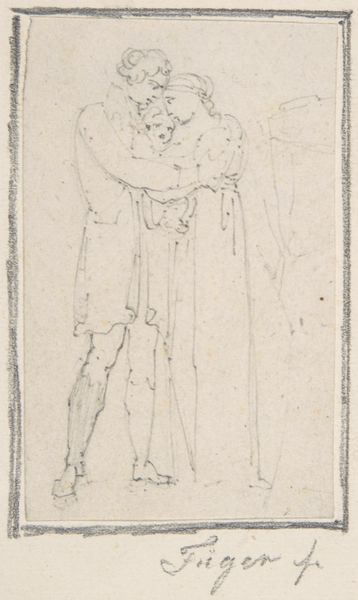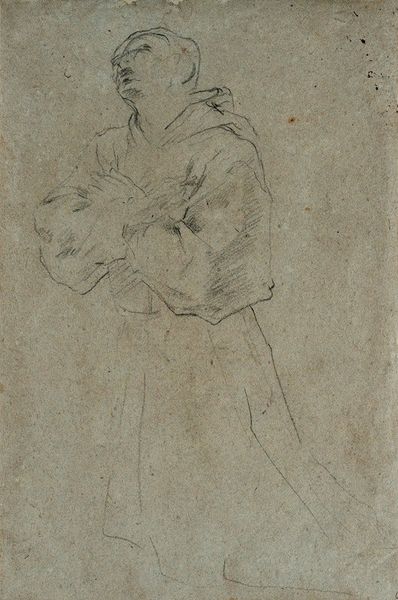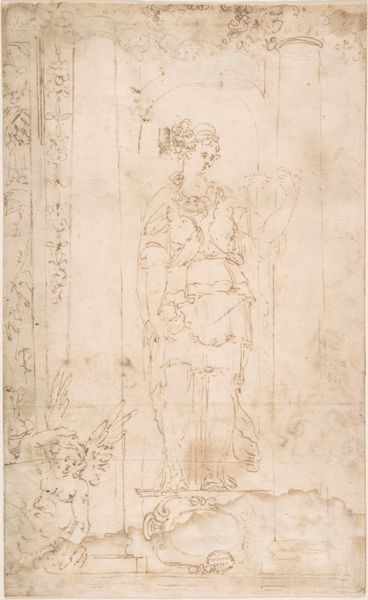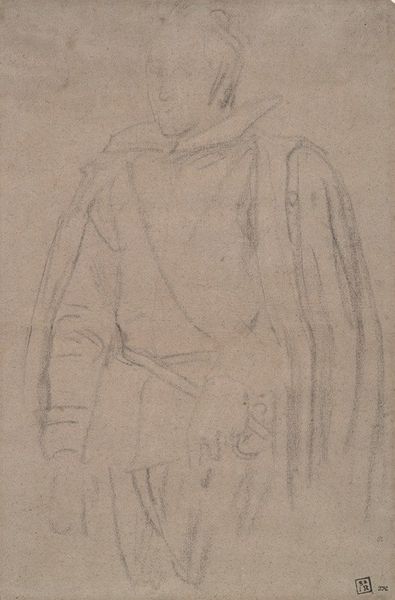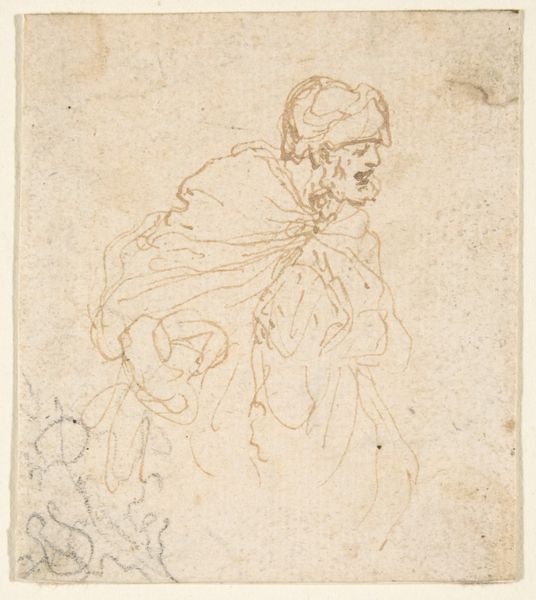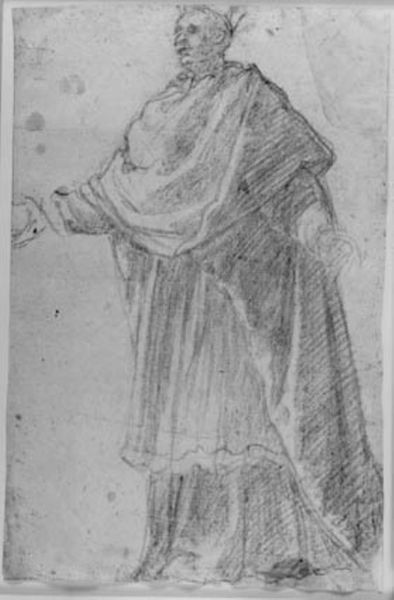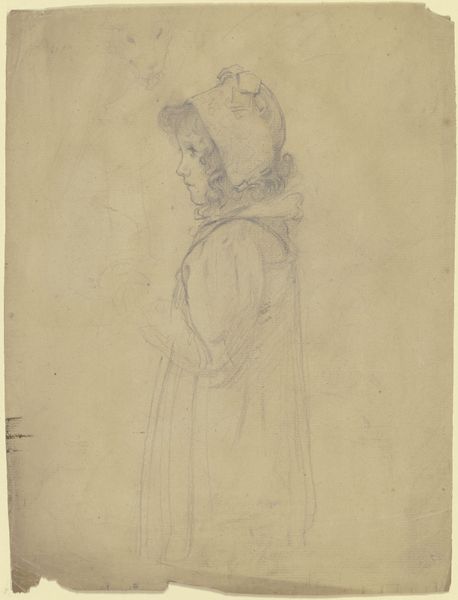
Study for the top left part of St Stephen's dalmatic, his left hand and the maniple around the 1520 - 1522
0:00
0:00
drawing
#
portrait
#
drawing
#
charcoal drawing
#
11_renaissance
#
line
Dimensions: 151 mm (height) x 100 mm (width) (bladmaal)
Curator: This preliminary sketch is titled "Study for the top left part of St Stephen's dalmatic, his left hand and the maniple around the," created by Hans Baldung around 1520 to 1522. The artwork, currently housed at the SMK - Statens Museum for Kunst, uses drawing as its medium. Editor: There's a lightness, a vulnerability here, perhaps because we’re seeing the artistic process laid bare. It feels very immediate, the tentative lines suggesting a searching for form. What strikes you most about Baldung's technique and intended purpose with these materials? Curator: I see this drawing as a significant artifact, giving insight into the Renaissance, in terms of ecclesiastical fashion and symbolism, but it's also evidence of the economic practices involved in clothing the clergy of the period. Editor: Absolutely. Baldung’s choice of a relatively ephemeral material like charcoal speaks volumes. The fact that he would invest such meticulous labor into this preparatory work tells us about value. And in examining the finished dalmatic in a fuller painting, could we discern if the original sketches match how the design changed during creation and by whom it would eventually be worn? Curator: It seems important to me that Baldung would engage with clothing worn by St. Stephen since that choice situates him historically. This kind of decision invites critical dialogue surrounding religion, class, and visibility within society. These artistic decisions place the sketch into larger societal concerns in that period, such as faith, power, and hierarchies. Editor: Precisely, and if we think about Baldung's potential audience, were they likely attuned to those socio-political implications in ways we might not fully appreciate today? Perhaps the seemingly unfinished nature of the work invites them into this type of social investigation more easily. Curator: Possibly, however incomplete though it is, it opens a pathway to discuss marginalized individuals within religious institutions in relation to artwork from the same era with far grander appeal. The delicate tracing may symbolize fragility but points toward the historical treatment and visibility afforded to individuals within religious roles, and questions regarding class and authority persist. Editor: Viewing these drawings through the lens of the artist’s choices allows us to reflect on Baldung’s world. Curator: Agreed, let's move on to our next study.
Comments
No comments
Be the first to comment and join the conversation on the ultimate creative platform.
